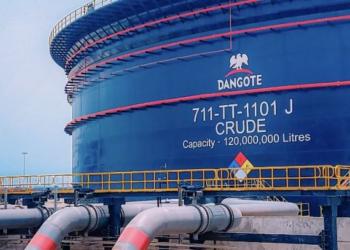Dangote Cement Plc (DANGCEM) has secured another tax exemption approval on its three lines (Lines 3 & 4 and Obajana Line 4) but the expected Q3’18 Nigerian Investment Promotion Commission report would provide details of the development.
What it means
The related lines, which were commissioned in 2014 and had already received NIPC approval for initial three years tax holiday each, would not be taxed by the federal government for the next two years.
Tax holiday history
Dangote Cement is a recipient of a tax holiday from the Nigerian government until 2016 as some sort of incentive as the company received a N10.4 billion ($64.4 million) tax credit from the government, which was added to their bottom line, hence the reason the after-tax profits are even higher.
CardinalStone reported that the company assumed that all three lines would be granted the further 2 years tax concession applied for and, therefore, charged effective tax rate at c.19.0% for the Nigerian business in H1’19.
The independent multi-asset investment management firm retained the view that DANGCEM’S Nigerian effective tax rate would remain around the 19.0% level on the back of management’s confirmation of the approval of its pioneer tax status extension application.
It’s a buy
Considering its leadership position in the Nigerian and Continent’s cement industry, CardinalStone projected that DANGCEM remains a cost leader in the cement market, boasting a market share of c.64.0% as at H1’19.
It said, “The company has Earnings before interest, tax, depreciation and amortization (EBITDA) and profit after tax (PAT) margins of 46.6% and 25.5% (using H1’19 numbers) respectively. We have a 12-month Target Price of N212.32 on the company and see a 40.7% upside relative to the stock’s last market close. We have a BUY recommendation on the stock.”
Details of H1’19
DANGCEM’s Q2 19 results showed earning per share (EPS) that grew by 44% to N3.46 from N2.41 in Q2 18, emanating largely from a material decline in net finance cost (-71% YoY) and tax provision for the period (-51% YoY).
On the positive, COGS declined 6.5% YoY, with gross margin expanding 54bps to 58.8%. The cost savings emanated from improved energy cost (-14% YoY), with related cost per ton declining 3% YoY to N15,763. Analysts believe the improvement is linked to the new gas turbines installed in Tanzania and improved efficiency on coal utilisation.
In addition, a lower effective tax rate (ETR) of 23% compared to 47% in Q2 18, supported growth in PAT by 44% on the year to N59 billion.
Volume growth in Pan-African segment
CardinalStone is optimistic on volumes growth in the Pan-African segment, specifically, on its operations in Tanzania, Zambia and Ethiopia:
Tanzania (3.0Mt Integrated plant)
Production was constrained from January till November 2018, due to the delay in the installation of the gas turbines. The investment firm expects production to ramp up in 2019, following the successful installation of the gas turbines.
Zambia (1.5Mt Integrated plant)
Cement demand has been supported by increased infrastructure and mining projects in the country; volumes grew by 25.0% YoY to 1.0Mt in 2018. We expect this to be sustained in 2019.
Ethiopia (2.5Mt Integrated plant)
Disruptions from civil unrest hampered production and distribution over 2018, as volumes declined by 6.2% YoY to 2.1Mt. We expect activities to recover in 2019, following the appointment of a new prime minister which has improved the political situation in the country.
It said, “We expect the Pan African segment to support sales in 2019. Our projected overall volumes for this segment stand at 10.2Mt in FY’19 (+4.7% YoY), accompanied with higher pricing (+6.0% YoY). This translates to a total revenue of N326.9 billion for the segment; thus, increasing revenue contribution of the non-Nigerian segment to 34.2% (31.4% in FY’18). Overall, we project group FY’19 revenue to settle at N956.6 billion (+6.1% YoY).”
























Your own article states the tax exemption is taken as an initial three year period, followed by a two-year extension, which has recently been approved. This equals FIVE years. It does not equal TWO five year exemption periods (or 10 years) back to back.